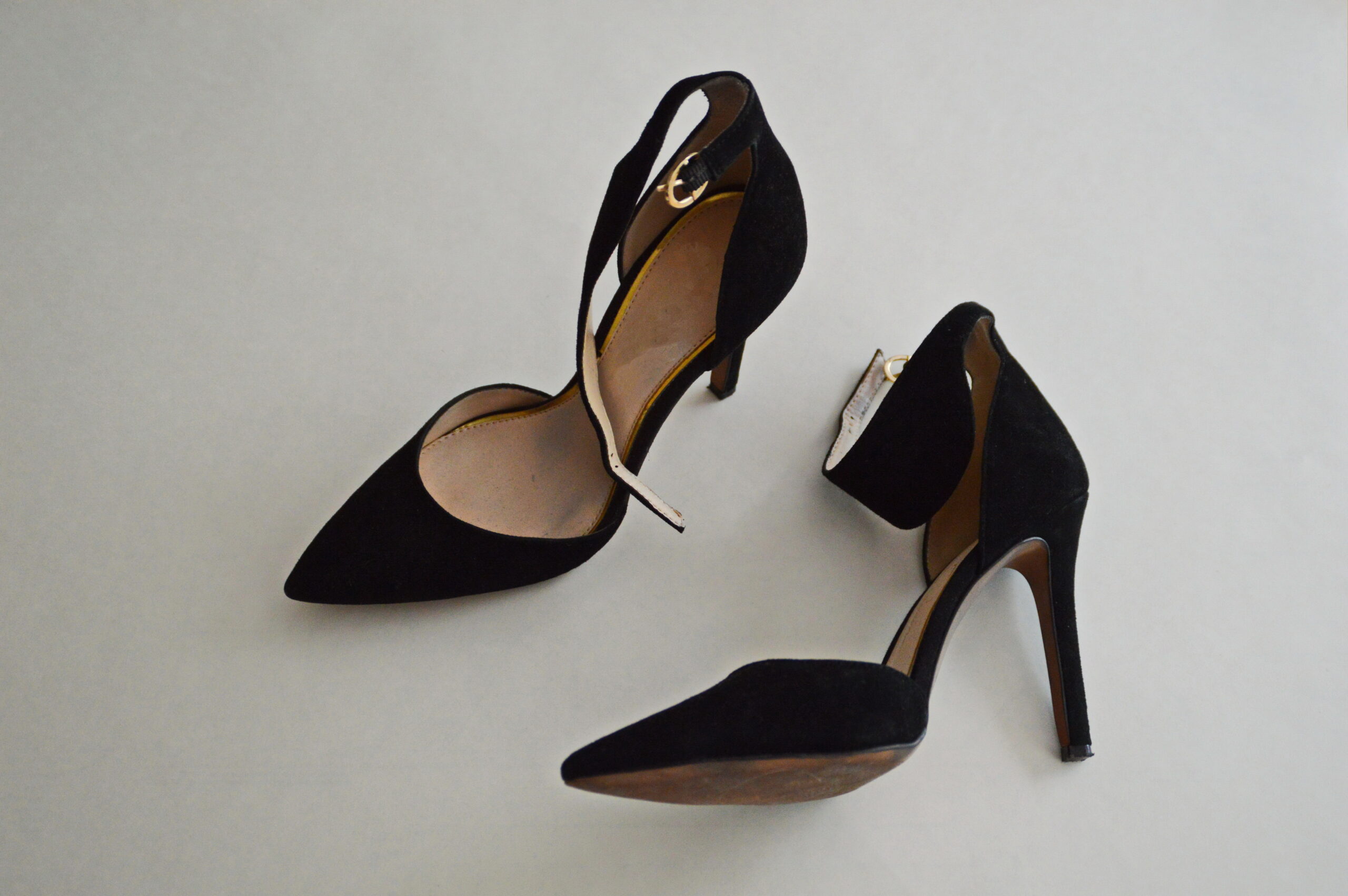According to the TV show Cheers,the secret to life may just be comfortable shoes! It’s been said that a woman who puts on a pair of high heels instantly changes. It’s worth noting that we used the word “woman” because, even though men donned heels regularly in centuries past and men in heels were spotted as recently as the fall 2017 New York fashion show, men are simply not the ones putting on heels on a daily basis. So, does wearing high heels really change a woman? If so, how does it change her? It depends on your point of view!
According to women who love heels….
- they feel “transformed”
- they carry themselves differently
- they don’t feel dressed up without them
- if they’re short, they enjoy feeling tall
- they expect and put up with foot pain
According to a woman’s podiatrist…
Heels do transform, but not just in a psychological way. There’s a physical transformation going on, too. When a woman wears high heels, she’s changing her body’s overall alignment. And that can spell pain in places much higher than the feet.
High heels force a person to put most of her weight on the balls of her feet. So, someone moving around in heels is constantly expending lots of energy trying not to pitch forward: she arches her back and throws her hips out of alignment in order to stay upright, which can lead to back pain and knee pain. A life in heels can eventually cause foot issues like chronic ankle instability, Achilles tendonitis, bunions, Morton’s neuroma, or other nerve pain issues.
Everything in moderation
If you love wearing heels, follow these three suggestions to keep your feet and your whole body happy, offered by the podiatrists at Garden State Foot and Ankle in Monmouth County, New Jersey:
- Don’t wear high heels every day. Change them up with flats.
- Try to limit your time in heels to a few hours a day.
- Avoid super stiletto heights in favor of a more modest 2- or 3-inch heel.
Every podiatrist understands the potential for foot and ankle problems that are created when women wear high heels. Bunions, hammertoes, metatarsalgia, corns, calluses, neuromas, ankle sprains and ingrown toenails are all conditions we treat that are directly caused by or, at the very least, made worse by tight-fitting, high heeled shoes.
High Heels
Patients will often say, “I can only wear Nine West” or “I can only wear Steve Madden shoes” because they believe that all other brands of high heels do not fit their foot correctly. We all realize the last part of the shoe determines the size, shape and certain style features of the shoe. Most patients understand that shoe sizes vary from manufacturer to manufacturer but there is a common misconception, especially among women wearing high heels, that sizing and fit within a brand are consistent and uniform.
It is surprising how many women have their feet measured and sized as teenagers and never have them measured again. It is not uncommon for a woman to be wearing a size 7 when the actual current measurement is size 9. This is especially true if a woman has had children or gains or loses a significant amount of weight.
Heel to Ball
The Brannock Foot-Measuring Device was patented in 1927 and is still the gold standard for foot measuring today. It determines both heel-to-toe and heel-to-ball or arch length. Ninety percent of the women I see in my office are wearing the wrong size shoe, especially when it comes to high heels. Why? They are relying on heel-to-toe measurements. Unfortunately, heel-to-toe measurements are impossible to use as a guide due to the variability of toe-box lengths. When fitting high heel shoes, the only measurement that matters is heel-to-ball.
A short heel-to-ball fit typically occurs in one of two ways.
- The arch of the shoe is too short for your patient’s arch either by style or size. This is the case where the foot measurement says size 9 and the patient is wearing size 8 shoes. No matter how much padding is provided underneath the ball of the foot, this mismatch will always produce metatarsalgia.
- The volume of the shoe exceeds the patient’s foot volume and her foot slides forward, losing heel-to- ball support. This is one of the main reasons high heels feel great in the shoe salon but are painful when people wear them outside. There are no hills in the shoe salon. There is only soft cushioned carpeting. Sliding does not occur until the patient walks down the first hill or quickly crosses the street. In this case, the height of the heel pushes the patient’s forefoot forward as she goes.
Volume mismatches will always produce heel slippage and applying heel grips to the inside counter of the shoe will do nothing to help in this case. This mismatch will also produce forefoot compression since the widest point of the forefoot has now slid to the more tapered part of the toe box instead of the widest point of the shoe.
This will also result in hammertoes due to the toes gripping as an attempt to stop the slide. Neuroma and bunion formation due to forefoot compression and metatarsalgia due to loss of support under the MPJs are inevitable in these cases.
High Heels from a podiatrist view
Due to the design of high heeled shoes, exact fit is required, and women should settle for nothing less. The nemesis of a well-fitting high heel shoe is the sale rack. Women too easily fall in love with an almost correctly fitting shoe that is on sale only to pay the price later with an otherwise avoidable injury. If women understand what to look for in a particular high heel shoe and how to achieve the best possible fit, they will not be so easily swayed by the sale rack.

0 Comments